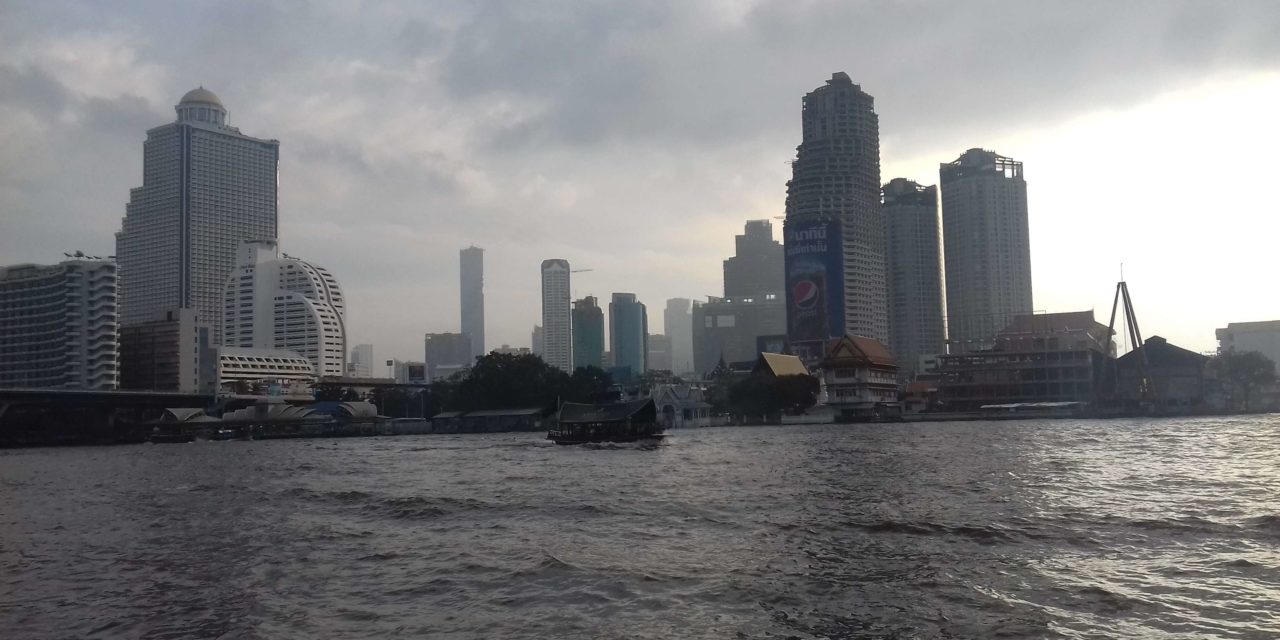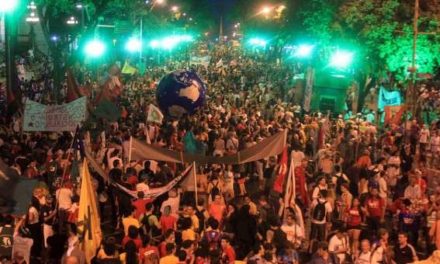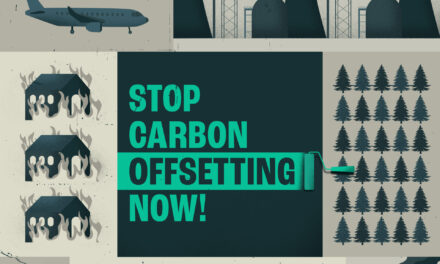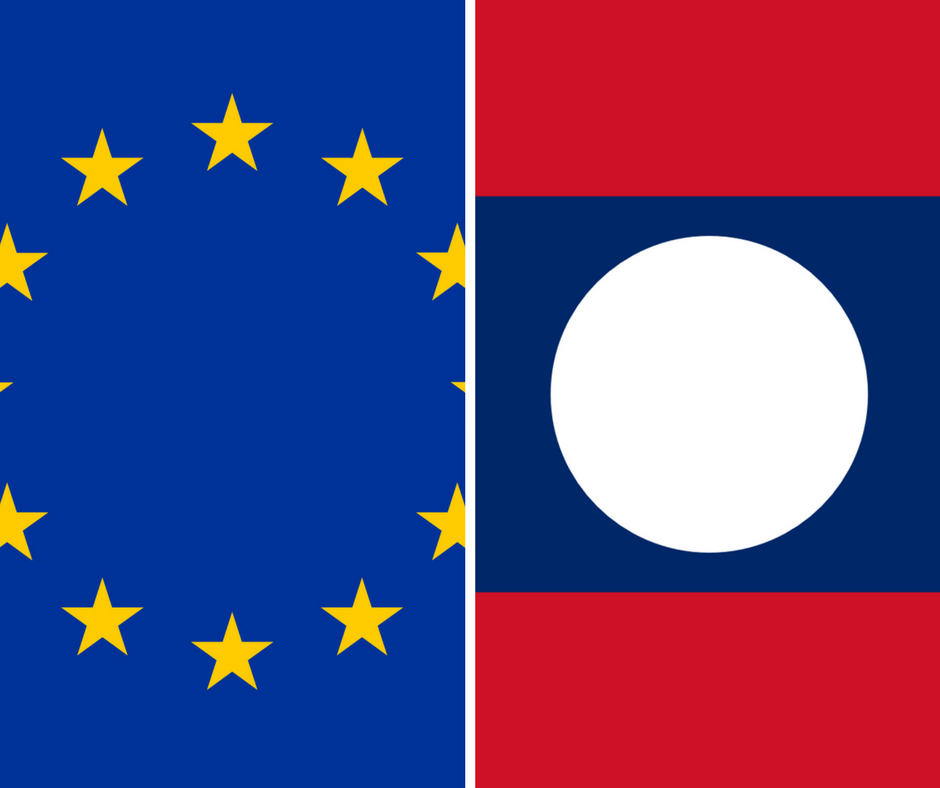The city of Bangkok is undergoing massive change and development, from the closing of street markets to the planning of large infrastructural projects in an effort to beautify, clear and “reclaim” the city’s streets “for the people”. As part of her internship with Focus on the Global South in Bangkok, Emma Finn researched and assessed these rapid developments. In her report below she asks, development for whom? And what are the implications for the urban poor?
Introduction
The Bangkok Metropolitan Agency (BMA) has failed to consider local urban communities’ priorities and needs in the planning and approval process of major development projects in the name of progress, beautification, and congestion-control of the city. Major developments along the Chao Phraya River will likely have drastic impacts on riverside communities, particularly for the urban poor—specifically ICONSIAM and the highly-controversial Chao Phraya Riverside Project. Disappearing urban communities in Bangkok is a human rights issue that should be accounted for, and current development projects not only threaten the rights and homes of many individuals, but also serve the Bangkok elite rather than local communities in need.
Chao Phraya Riverside Project
Perhaps the most controversial development project currently underway in Bangkok is the Chao Phraya Riverside Project, a promenade that is proposed to stretch 7 kilometers between the Rama VII and Pinklao Bridges along both sides of the river—a total of 14km in length (Nathapong, 2015). One of the first big projects initiated by the junta after the 2014 coup, the design intends to create bicycle lanes and riverside parks as new Bangkok destinations (Kongrut, 2016). As public-friendly as the project sounds, much of the problem and source of controversy lies within the design itself. Design experts, environmental scientists, and riverside communities alike have raised concerns regarding the likely adverse impact on flood and riverbank erosion the development will have. Architects such as Yossapan Somboon, founding member of the community nonprofit Friends of the River (FoR), criticize the project’s intent to put large concrete pillars into the river and a 3.7m-high flood wall along the promenade, which would protrude the promenade an estimated 10 meters into the Chao Phraya and narrow the river’s width by 10% (Kongrut, 2016). In addition, Bird Conservation Society of Thailand (BCST) director Nonn Panitvong stated that the project would drastically push the river toward ecological devastation—a larger structure would further kill the river ecosystem that is already almost 80% dead (Rujivanarom, 2016).
The 14 billion-baht project was originally scheduled to open in 2017, but community pushback from environmentalists, architects, academics, and residents alike has postponed the construction process. In a study of the development project conducted by the Department of Urban and Regional Planning at Chulalongkorn University, they reported that 29 riverside communities, 8 schools, 8 religious spaces, 8 administrative offices, and one landmark are to be affected by the project’s plan (Rujivanarom, 2015). At the forefront of the struggle against development, Friends of the River (FoR) has launched numerous campaigns to try to stop/postpone the project for reconsideration, marked by the well-known hashtag #RiverNotRoad. Despite the community backlash, however, in February 2015 the BMA cleared out 268 households along the Chao Phraya to make way for the new development project (Nathapong, 2015). Unfortunately for the fighting activists, conservationists, and community members, a budget of 1 billion baht has since been allocated for, and as recently as October 1st 2016, the government confirmed that it would go ahead with construction despite public objection (Kongrut, 2016).
ICONSIAM
While the Chao Phraya Riverside Project is publicly-funded, the ICONSIAM is a private endeavor; a massive project currently under construction along the Chao Phraya River that includes 2 vast retail and entertainment complexes, 2 residential condominium buildings, and 7 sight-seeing “wonders”, according to the website. Self-proclaimed as “The Icon of Eternal Prosperity,” the ICONSIAM is raved to be a prestigious and “monumental achievement” for investors in the project. The luxury condominium plans are now multi-award-winning, put forth by the development company that is a part of the triad that came together as ICONSIAM Company. This company is made up of three prestigious, mega-project companies that each hold significant investments in Bangkok already: Siam Piwat Company Limited, Magnolia Quality Development Corporation Limited (MQDC), and the Charoen Pokphand Group (CP) (ICONSIAM, 2014). Siam Piwat is the owner and designer of some of Bangkok’s most renowned shopping destinations, including Siam Center, Siam Discover, Siam Tower, Siam Paragon, and Paragon Park. MQDC, in charge of the luxury apartments, is a real estate development company that specializes in high-quality and energy-efficient residential and mix-use projects. Finally, the Charoen Pokphand Group is a multi-national investment corporation that operates in the industries of agribusiness and food, marketing and distribution, and telecommunications. The triad of these powerful stakeholders paint a strong picture of the kind of world-class destination that the ICONSIAM intends to be.
The superior rhetoric used by the company is astounding, and its public image has strategically received only positive reviews. Siam Piwat’s projects, for example, are praised as having raised the quality of life of Bangkok’s residents as well as “strengthened the position of Thailand as one of the most attractive shopping destinations in the region” (ICONSIAM, 2014). The issue, of course, is that the shops available in these retail locations are not local businesses, thus they do not generate local and sustainable economic growth to help eradicate Thailand’s issues of poverty and inequality. Rather, these large shopping centers further strengthen the pockets of large transnational corporations. Furthermore, in 2018 ICONSIAM is set to launch the ICONSIAM Heritage Museum as a part of the complex with the goal to “further contribute to the heritage of the area” . In regards to this heritage museum, the company has stated that it “will become a new symbol of national pride for Thailand and its people”. One can’t help but wonder, however, what kind of “heritage” the museum will portray and celebrate, given the fact that the prestigious ICONSIAM and its associated projects will only be affordable to the wealthier classes of Bangkok and Thailand. The irony of the project’s tagline “no project more exclusive, no project more inclusive” is shown by the very fact that when one walks alongside the project, there are signs demanding passersby to not take any photos of the site—its inclusivity is fundamentally exclusive to a certain crowd.
It has become evident, therefore, that the ICONSIAM is an elitist project that supports a very specific vision for the future of Bangkok as a global city—one that does not include the urban poor. There are various issues associated with such luxurious private investments and developments along the Chao Phraya. First, in rapidly urbanizing cities such as Bangkok, the acceleration of urbanization means making room for more people, more investment, and more development, which results in less space and tolerance for informal settlements and poor communities. One trend that is commonly found in fast-growing Asian cities is for governments to capitalize on market forces that have rendered public land profitable (“Quick Guides,” 2008). As a result, the poor are being evicted from the land they’ve occupied or rented for generations in order to make way for higher-profit uses such as shopping malls and condominiums, evicted simply because the poor cannot afford housing at market rates. Thus, large projects such as ICONSIAM greatly contribute to the displacement of urban poor communities because private investors increasingly appropriate the space that marginalized communities occupy for development without the inclusion of affordable housing or the input of the community from which it is taking. According to the UN’s Quick Guides for Policymakers 4: Alternatives to Eviction, evictions are a major cause of poverty in Asian cities, and effectively make the poor get poorer as they push communities into the urban peripheries, away from their work places (“Quick Guides,” 2008). Furthermore, private investments are extremely difficult to contest because they go through their own funding and approval processes. On the other hand, when the government is involved in funding and approving riverside projects, there is generally a bigger window for public scrutiny due to the fact that public money is being used. Thus, when a government-sponsored development project is not supported by the public, as in the case of the Chao Phraya Riverside Project, it becomes a more potent issue for the community at large.
“For the People”
It is deceiving that the BMA and the junta government’s support for big development schemes in Bangkok are all motivated by slogans of being “for the people,” because in reality these development projects are neither inclusive nor conducive to the affected communities of such projects. In an attempt to keep up with rapid urbanization and property development, to mediate large traffic issues, and to accommodate the metropolis’ population growth, the BMA has been “reorganizing” old neighborhood boundaries (Jansuttipan, 2016). Such action derives from the military-led government’s clean-up campaign to “reclaim” public spaces—spaces where authorities say have been illegally occupied by venders and others. Thus, in an effort to “maintain order” in Bangkok, the BMA has successfully launched their large-scale eviction process of street vendors from historic and well-known market areas such as Klong Tom, Tha Phrachan, Saphan Lek, Pak Klong Talat, Siam Square, etc. (Wotton, 2016). Furthermore, the controversial appointment of Pol Gen Aswin Kwanmuang as the governor of Bangkok in August 2016 has raised concerns for some communities facing eviction. Prime Minister General Prayuth Chan-o-Cha suspended Governor MR Sukhumbhand Paribatra from office under Section 44 of the constitution after the twice-elected governor was accused of corruption, replacing him with the general who was in charge of the city’s Tesakij, the municipal law enforcement, and known for the forceful eviction of the Pak Klong Talad vendors, among others throughout the city (BK Magazine, 2016). In response to the appointment of the new governor, an article published in BK Magazine raised the critical question of whether BMA’s priorities were for urban planning or for law enforcement (BK Magazine, 2016). More and more so, however, it has become evident that these two systems of power come hand-in-hand under the junta government’s development plans; large-scale public and private development and urban planning projects often entail the forcible ousting of local communities.
The verbatim of the BMA’s strategy highly contradicts the reality of its campaign, providing clear evidence of the BMA’s controversial intent. The use of positively-connoted words such as “reorganize,” “reclaim,” and “maintain order” ignore the fact that these beautification and development schemes come at the expense of the urban poor, who face large-scale evictions. When comparing the stated aims of the clean-up campaign (reclaiming public space) to the actual evictions of street vendors, an obvious inquiry is: who occupies public space, if not the local people?
Thus, the looming question remains: for whom are the streets of Bangkok being “reclaimed”? For vendors who have been stationed in crucial market districts for decades, the answer seems obvious—space that is no longer for them. Interviews in a BK Magazine article on Bangkok’s “disappearing communities” brought forth the opinions of local vendors and renters in markets facing evictions issues (Jansuttipan, 2016). Nutdara Sriwichai, a Pak Klong Talad flower vendor, was quoted saying that the BMA told her to move to the nearby Kaset Thai Market, which asked her to pay for a 2-year contract in order to get a selling spot at 300,000 baht, which is an unreasonable and unaffordable arrangement. Clothing vendor Orawan Issarasichai at Saphan Phut said that she “cannot understand why the BMA wants a lively business district and tourist attraction to disappear,” specifically due to the fact that the BMA moved her family to this location over two decades ago to set up shop, and the area of Saphan Phut had since become one of the top 10 tourist attractions in Bangkok.
Depending on the population size and property area of a community, evicted residents are sometimes put into relocation programs, such as those of the Mahakan Fort community beginning in the early 1990s. In the case of the Mahakan Fort community, however, the area of the program was located about 30km away from the old community and had no infrastructure, making the relocation area unlivable (Wattanasukchai, 2016). According to an article in the Bangkok Post, housing rights advocates have never gained recognition from the BMA, which plans on turning the Mahakan Fort area into a public park (Wattanasukchai, 2016). In an interview with BK Magazine, Nuttawut Usavagovitwong, Chairman of the Association of Siamese Architects’ Community Architect Network Committee (ASA CAN), advocated for evicted vendors, stating that “busy markets like Pak Klong Talad selling flowers and food create a sustainable economy. If you get rid of it, will you destroy the neighborhood’s economy and see the community decline?” (Jansuttipan, 2016). In addition, Usavagovitwong further emphasized the need for the BMA and government to allow people to be a part of city planning. To him, it makes no sense that people have no power to protect their neighborhood, while city planning is managed by a district staff who do not and cannot see the whole picture of a metropolitan area that includes 6-7 million people (Jansuttipan, 2016). One logical solution to make city planning most effective is for those who design policy to listen to and ask what the people on the ground want. The top-down design scheme of government-level policies and lack of cohesion among state agencies makes public infrastructure and urban planning in Bangkok largely inefficient and impractical.
When asked “who owns the street,” Thammasat University student Smuk Chamnipasertkul responded that the people do, because “we pay taxes.” This logical statement was immediately followed with the slightly jaded comment that most of these taxes end up in politician’s wallets, however. With the feeling that most Bangkokians have no hope for government-level policies helping the masses, Chamnipaserkul believes that the government needs to build trust and truly reform itself in order to properly serve the people. Inequality and the looming gap in wealth distribution is what came to mind when she heard the phrase “development in Bangkok,” which speaks to this public distrust in the government.
From the testimonies, many of them partly agree with such clean-up programs, pointing to the fact that street vendors become overbearing when they take up the entire sidewalk and pedestrians can no longer walk along the path. Chamnipasertkul also stated that most Bangkok residents think the clean-up campaign is much needed, yet she holds that the BMA is not doing well enough to keep the city clean, pointing to the lack of trash bins as a large issue: contributing to pollution, aesthetic displeasure, and the resulting trash piles on the streets becoming an obstacle for pedestrian walking. At the same time, however, it is imperative to understand that poor people should have the right to live in the big city and make their own businesses, and that street-selling is often their only source of income. Therefore, it’s a matter of management and strategizing how to strike a balance between ensuring street vendors the ability to conduct their business as well as pedestrians the ability to walk along the street.
Conclusion
The purpose of government city planning is to serve the public at large, thus the BMA must “reclaim” the streets for everyone. In a sprawled-out city that continues to develop at an unprecedented pace, the reorganization of Bangkok via urban planning should incorporate its poor urban communities. While the BMA is responsible for making Bangkok a more livable city, it is imperative that the narratives of the poor are accommodated for, otherwise the metropolitan region will continue to exclude people and solely serve the upper classes of Bangkok. Under the BMA’s current policy to “clean-up” the streets and advance the city of Bangkok, development only serves the lifestyle of elite Bangkokians at the cost of the poor people who also live in Bangkok. While the streets are cleared and the city undergoes a process of beautification, the marginalized poor are being forced to pay the price while those with political and economic power get the profit. Thus, the BMA must reform its approach and role in Bangkok development. In order to keep up with rapid development and investment deals, the government and BMA have the responsibility to ensure that sustainable, inclusive development is a priority—one that does not displace people or put livelihoods and ecosystems in danger.
Works Cited
ICONSIAM. (2014). Retrieved November 02, 2016, from http://iconsiam.com/en/iconsiam/iconsiam
Bangkok’s evictions cop is named governor. (2016, October 18). BK Magazine. Retrieved November 02, 2016, from http://bk.asia-city.com/city-living/news/bangkok-evictions-cop-named-governor
Jansuttipan, M. (2016, February 19). Bangkok’s disappearing communities in the face of rapid urban development. BK Magazine. Retrieved November 02, 2016, from http://bk.asia-city.com/city-living/news/bangkok-disappearing-communities-urban-development
Kongrut, A. (2016, October 11). Rolling on the River: Architect-activist sees dangers in the government’s plans to redesign the Chao Phraya’s banks. Bangkok Post. Retrieved November 02, 2016, from http://www.bangkokpost.com/lifestyle/social-and-lifestyle/1107533/roiling-on-the-river
Nathapong, S. (2015, June 11). Riverside promenade to move ahead without environmental impact study. BK Magazine. Retrieved November 02, 2016, from http://bk.asia-city.com/city-living/news/riverside-promenade-moves-along-without-concerns-environmental-impact
Quick Guides for Policy Makers 4 EVICTION: Alternatives to the whole-scale destruction of urban poor communities (Vol. 4, Housing the Poor in Asian Cities). (2008). Bangkok, Thailand: United Nations Economic and Social Commission for Asia and the Pacific (UNESCAP) & Nairobi, Kenya: United Nations Human Settlements Programme (UN-HABITAT). Retrieved December 30, 2016, from http://unhabitat.org/books/quick-guides-for-policy-makers-4-eviction-alternatives-to-the-whole-scale-destruction-of-urban-poor-communities/
Rujivanarom, P. (2015, November 27). Delay in Chao Phraya promenade project. Asia News Network. Retrieved November 02, 2016, from http://www.asianews.network/content/delay-chao-phraya-promenade-project-4464
Rujivanarom, P. (2016, September 26). Promenade ‘will change the river’s flow and eco-system’. The Nation. Retrieved November 02, 2016, from http://www.nationmultimedia.com/news/national/30296182
Wattanasukchai, S. (2016, October 21). Urban poor get rough deal on housing. Bangkok Post. Retrieved November 03, 2016, from http://www.bangkokpost.com/archive/urban-poor-get-rough-deal-on-housing/1115557
Wotton, C. (2016, June 30). Siam Square street vendors forced out by Bangkok’s City Hall. Elite Plus Magazine. Retrieved November 15, 2016, from http://www.eliteplusmagazine.com/home/content/303/8#
Photo credit: Andrew Lowenthal





![[UPCOMING EVENT] Learning from Herstories and Histories; Shaping Futures](https://focusweb.org/wp-content/uploads/2023/07/1-1-440x264.png)




